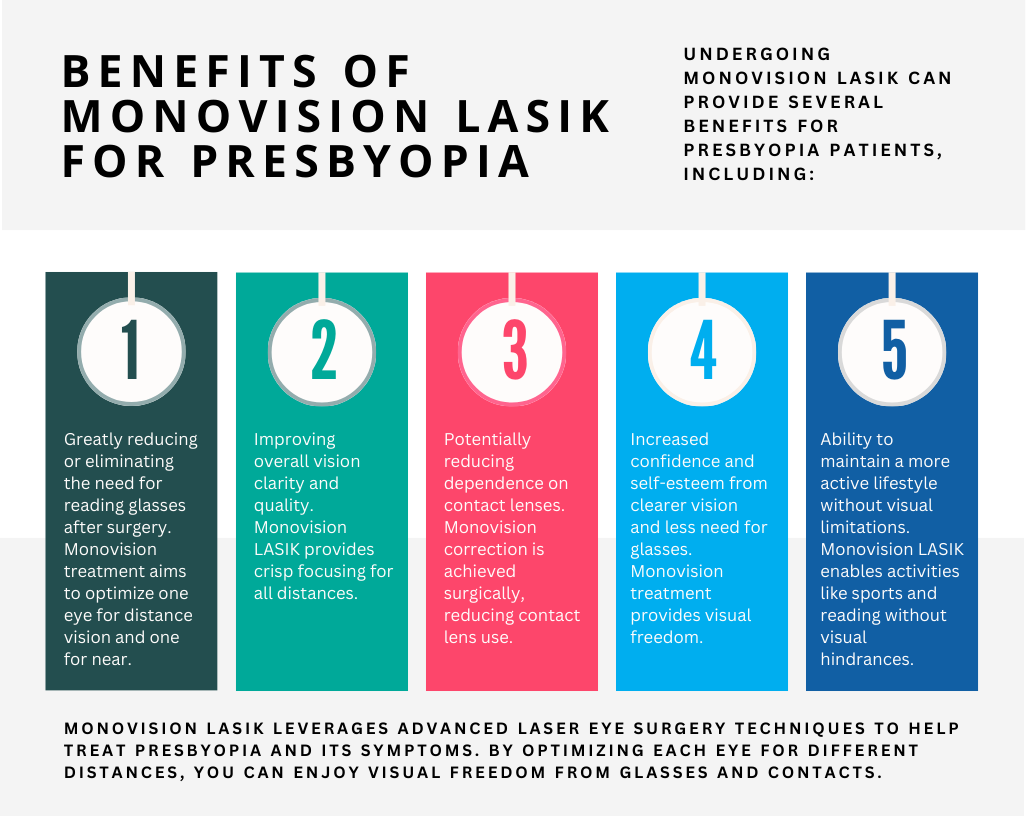When you have LASIK, you and your doctor may decide to leave one eye slightly nearsighted. This is called monovision and may allow you to maintain your ability to read without glasses after you begin to experience presbyopia (the need for reading glasses as you get older). Your other eye will be fully treated for distance vision.
Who Is a Candidate for Monovision LASIK?
Monovision LASIK is a carefully balanced compromise that allows you to preserve your near vision while sacrificing some distance vision sharpness. It is particularly helpful for everyday tasks like reading a menu or article, but not for extended periods of reading fine print. However, it may not be suitable for highly active individuals, such as avid golfers, tennis players, or frequent nighttime drivers.
Before undergoing laser vision correction, your eye doctor will assess your unique needs and lifestyle to determine whether monovision LASIK is the right choice for you.

How Does Monovision Work?
Unlike traditional LASIK, which aims for perfect distance vision in both eyes, monovision LASIK intentionally corrects one eye for near vision while optimizing the other eye for distance vision. This results in the dominant eye primarily used for distant vision and the non-dominant eye for close-up tasks.
When both eyes work in tandem, your brain naturally selects the clearer image, allowing you to seamlessly switch between different focal distances without the constant need for corrective lenses. While some patients may require an initial adjustment period, others adapt immediately. To prepare for LASIK surgery, your eye care provider may recommend using contact lenses to simulate monovision, giving you a preview of the benefits it can offer.
In conclusion, monovision LASIK can be a game-changer for individuals seeking to maintain their near vision while enjoying improved distance vision. Discuss your options with an experienced eye care professional to determine if monovision LASIK is the right solution for you. Say goodbye to reading glasses and embrace a life with clearer, more flexible vision.
Sources
What Is Presbyopia? (2022, November 22). American Academy of Ophthalmology. https://www.aao.org/eye-health/diseases/what-is-presbyopia
American Society of Cataract and Refractive Surgery. (n.d.). ASCRS. https://ascrs.org